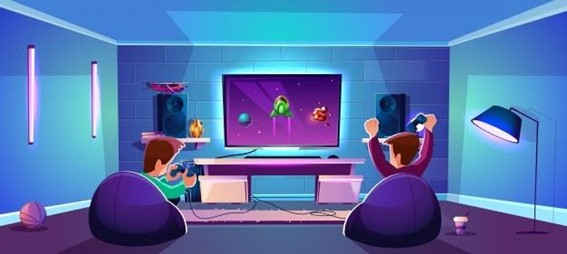Blog
Estrategias didácticas para hackear la educación virtual

Subscribe
Receive the latest content on educational innovation.La gamificación es la inmersión de la narrativa en un contenido completo que se desarrolla y genera aprendizaje tomando elementos de juego, mientras que los aprendizajes basados en juegos son juegos que ya tienen sus dinámicas, estrategias y reglas preestablecidas y que se adaptan para enseñar algo.
Además, proporciona al menos cincuenta diferentes elementos de juego que pueden ser adaptados a las clases, sin necesidad de implementarlos todos al mismo tiempo pero si se puede considerar aquellos que se adecuen mejor a la dinámica y motiven a los alumnos a lograr propósitos de aprendizaje
La neurociencia nos enseña que la base del aprendizaje son las emociones, por lo tanto, aprender jugando es un método muy útil para adaptarnos al ritmo de aprendizaje de los alumnos y a las dinámicas actuales.
¿Quieres saber cómo hacerlo?
- Establece objetivos de aprendizaje:
- Materia o temática de aprendizaje.
- Definición de objetivos.
- Competencias.
- Elementos de juego:
- Reglas de juego.
- Recompensas.
- Otros elementos.
- Elementos a tener en cuenta en la narrativa:
La narrativa es la excusa para conseguir que los estudiantes se involucren en el desarrollo de su aprendizaje, por esto:
- Capta la atención del estudiante desde el principio.
- Narra a través de historias.
- Cuenta por que el personaje del juego está haciendo lo que está haciendo.
- Diseña una aventura de héroes. Los alumnos asumen este rol para alcanzar misiones.
(Responde con la historia a las preguntas ¿Qué se debe hacer? ¿para qué se hace? ¿Qué finalidad tiene?). - Define elementos de storytelling (mundo real, mundo ficticio, héroes, poderes, villanos).
- Describe la secuencia de situaciones que deberá vivir el héroe desde la llamada hasta el regreso al mundo ordinario (se incluye la secuencia de misiones con retos cada vez más complejos que los anteriores).
- Narrativa:
- Juego elegido como inspiración.
- Responder a estas preguntas con la narrativa del juego: ¿Qué se debe hacer? ¿Para qué se hace? ¿Qué finalidad tiene?
¿Cómo desarrollar habilidades digitales y pedagógicas que se puedan aplicar al diseño de cursos o clases virtuales?
- Contenidos digitales (formatos y ejemplos):
- Podcast.
- Videos digitales.
- Videos musicales.
- Videos tipo TED.
- Narrativas gráficas y comics.
- Mezcla entre comic y fotográficas.
- Posters.
- E-cards.
- Infografías.
- Mapas.
- Juegos informativos.
- Formatos periodísticos.
¿Cuáles son las herramientas recomendadas?
- Canva.
- Atavist.
- Coggle.
- Powtoon.
- StoryMap JS.
- Piktochart.
- Nearpod
¿Cómo aplicar la gamificación al proyecto?
- Construye una narrativa de acuerdo al tema de tu proyecto.
- Elige y describe los elementos de juego en la gamificación que aplicaras en tu proyecto.
- Describe cuáles serán las misiones que debe alcanzar el aprendiz en tu proyecto.
- MISIONES Y RETOS:
- Definir las misiones.
- Elementos a alcanzar en cada misión relacionada con los objetivos de aprendizaje.
El Aprendizaje basado en proyectos genera aprendizaje significativo, ya que el estudiante se relaciona con lo estudiado de acuerdo a sus propios objetivos y busca tener nuevos conocimientos y experiencias.
También, fortalece la resolución de problemas y la colaboración, debido a que el alumno resuelve situaciones reales a través de la apropiación de diferentes herramientas digitales que propician la colaboración y discusión a través de canales de comunicación.
Speaker: Jovanna Marin

Recent comments: